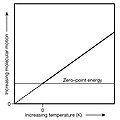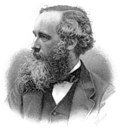Zero-point energy
Zero-point energy is the energy of the vacuum space, the space between the subatomic particles within atoms. There are a few theories about how much energy there is in that space. There is the theory that there is an incredibly small, very near-zero amount, the theory that there is zero energy there, the theory that the amount of energy is indeterminable, and the theory that a cubic centimetre of vacuum has a few levels of magnitude more energy than would be required to create the Big Bang.
If you look at the way physics is going, there are atoms, then there are subatomic particles making up atoms (e.g. electrons, protons, neutrons), then further subatomic particles making up those subatomic particles (e.g. quarks, gluons), and now there is string theory. String theory says that those smallest subatomic particles are made of vibrating strings of energy, and that those strings have practically no actual width whatsoever. So all the matter of the universe could be compressed into an extremely small space, hence the Big Bang theory. If this is the case, the large energy interpretation of zero-point energy seems likely.
The term "zero-point" comes from the cooling of helium to 0 kelvin. Even at fractions below 1 Kelvin, the helium stays fluid with no signs of freezing.
Zero-point Energy Media
Liquid helium retains kinetic energy and does not freeze regardless of temperature at standard atmospheric pressure due to zero-point energy. When cooled below its Lambda point, it exhibits properties of superfluidity.
Zero-point radiation continually imparts random impulses on an electron, so that it never comes to a complete stop. Zero-point radiation gives the oscillator an average energy equal to the frequency of oscillation multiplied by one-half of the Planck constant.
Planck in 1918, the year he received the Nobel Prize in Physics for his work on quantum theory
Light coming from the surface of a strongly magnetic neutron star (left) becomes linearly polarised as it travels through the vacuum.
References
Other websites
- Physics: Superfluid helium HD | experiment and explanation.
- Zero-point energy? Archived 2008-12-04 at the Wayback Machine "Ask the Van" popular science FAQ at University of Illinois.








